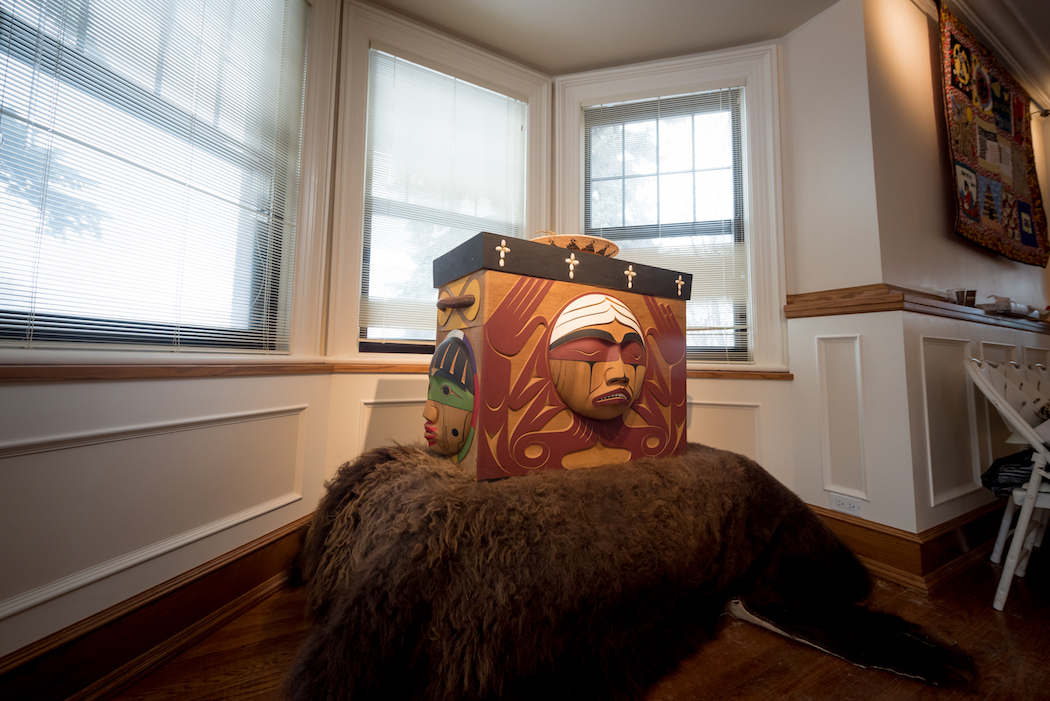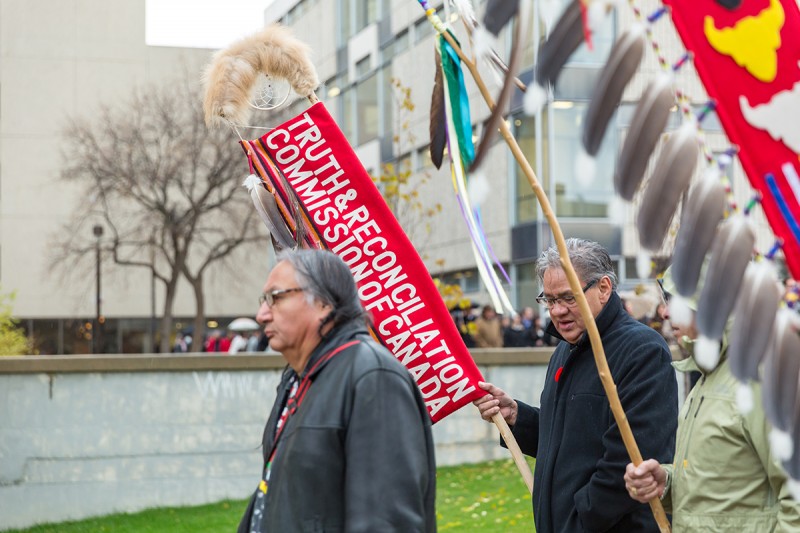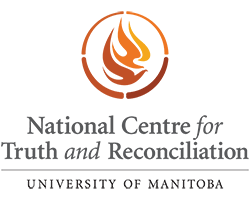
The Bentwood Box at the National Centre for Truth and Reconciliation.
Canada’s Mentor
NCTR’s decolonizing archival practices
This story first appeared in the special mentoring issue of TeachingLIFE published in Fall 2018.
Archives are no longer just about anthropologists taking notes.
“These archives are people telling their own stories, in their own languages—and sharing their knowledge more directly through the use of video and audio,” says Raymond Frogner, head of Archives at the National Centre for Truth and Reconciliation (NCTR).
“These archives are people telling their own stories, in their own languages—and sharing their knowledge more directly through the use of video and audio.”
With its decolonizing and Indigenizing approach, NCTR Archives is unique. In fact, the NCTR is committed to Indigenizing the archival profession. Prioritizing the hiring of Indigenous interns and archives staff, it also seeks advice and guidance from the Survivors Circle, a seven-member body of First Nations, Inuit and Métis Survivors from various regions, selected by NCTR’s Governing Circle.

Carl Stone leading the ceremonial procession across the Fort Garry Campus at the NCTR opening.
Archivists at the NCTR are tasked with the keeping of records, history and stories from Survivors of Residential Schools. The NCTR also provides a platform for mentorship and guidance as archivists and non-archivists bridge the gap between information in archives and an understanding of this information by the general public.
Archivists at the NCTR are tasked with the keeping of records, history and stories from Survivors of Residential Schools.
“The NCTR is blessed with an amazing collection of testimonies, over 7,000 personal, intimate and eye-witness accounts of people’s experiences in Residential Schools,” says Frogner. “The real gem of what we are holding is a cross-country collection of the thoughts and experiences from Indigenous communities from north, east and west.”
The use of audio and video tools allow for archiving oral history and stories in a way that wasn’t possible in the past. Elders and Survivors from across the country now have the ability to tell their stories to people outside their community and in classrooms they may not be able to reach otherwise.
Indigenous input is incorporated at the outset in processing records that were buried and inaccessible. So past narratives are preserved without forgetting the contexts in which the Residential School records were created, interpreting them through an Indigenous lens. Ongoing community engagement meets the needs of Survivors, Intergenerational Survivors and their families.
Words of the Survivors at heart of NCTR Archives
NCTR digital archivist Jesse Boiteau [BesA/08, MA/17], who is Métis, was encouraged to explore Indigenous voices in archives by his mentors, Tom Nesmith, senior scholar, and Greg Bak, associate professor in the archival studies master’s program at the U of M. When he started working at the Provincial Archives of Manitoba in 2008, it was obvious to Boiteau that the Indigenous records housed in archives were predominantly written by non-Indigenous peoples, placing Indigenous peoples as subjects of the records.
At the NCTR, he says, no one accepts the status quo of traditional Western archival theory and practice.
“We work collaboratively to discover innovative ways of how technology and Indigenous input can put decolonizing archival theory into practice,” says Boiteau.
Boiteau: I am mentored every day by the words of the Survivors.
“I am also mentored every day by the words of the Survivors, whom I’ve either met in person or witnessed on screen in audio-visual testimonies. [They are] at the heart of the NCTR archives,” says Boiteau.
And so the NCTR has become a mentor to all of Canada in the sharing of the difficult history and experiences of Residential Schools. Opening the doors to all in the interest of implementing the United Nations Declaration of Rights of Indigenous Peoples, the NCTR is also providing a place for academics from all disciplines to begin connecting with Indigenous communities, to break down barriers and to start building relationships.
“The UN Declaration of Rights of Indigenous Peoples is here for the self-determination of Indigenous Rights. NCTR is a strong centre for the study, preservation, and pursuit of those rights,” says Frogner.
“There is to be a new set of relationships built and hopefully we can be a bridge to building those relationships.”
This story first appeared in the special mentoring issue of TeachingLIFE published in Fall 2018; read the rest of the issue online.
The National Centre for Truth and Reconciliation is located at Chancellor’s Hall, 177 Dysart Rd., University of Manitoba.
About the Bentwood Box at the NCTR:
In 2009, the Truth and Reconciliation Commission (TRC) commissioned Coast Salish artist Luke Marston to create a piece of art to represent all the Survivors of the Residential School System of Canada. The resulting Bentwood Box spent six years traveling the country with the TRC, collecting items relating to personal journeys of healing. Ballet slippers, a hockey jersey and a miniature birchbark canoe were among the 1,300 items placed inside.
Crafted from a single piece of western red cedar, with carvings on each side in honour of First Nations, Métis and Inuit peoples, the Bentwood Box now calls the National Centre for Truth and Reconciliation (NCTR) on the University of Manitoba’s Fort Garry campus home.
The box is a keeper of truths, and embodies the strength—and the pain—of the Indigenous cultures it represents.







